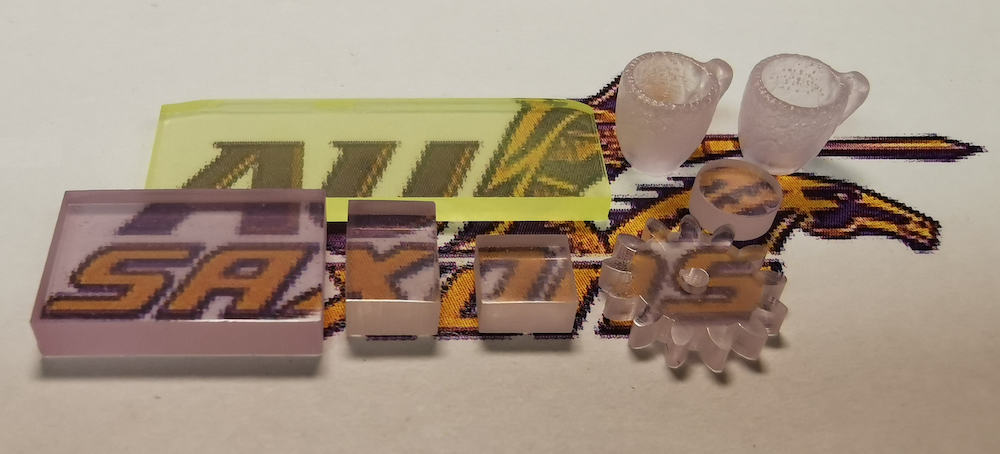
[Image above] Highly transparent yttrium aluminum garnet ceramics with 3D structures, created via a lithography printing method. Credit: Zhang and Wu
Usually when an application requires an optically transparent material, researchers turn to glass or plastic as a solution. In recent years, though, advancement of transparent ceramics has opened the door to new options.
Transparent ceramics are a special category of ceramics with unique transparent features, which come from a microstructure of intimately stacked crystalline grains that allow light to propagate with minimal scattering. Transparent ceramics have found application in many technologies, including scintillators, infrared domes, transparent windows, laser gain media, lamp envelopes, phosphors, high-power LED lights, and optoelectronic devices.
To date, the most widely used methods for fabricating transparent ceramics are powder pressing and slurry casting. However, to meet the industry’s growing demand for customized manufacturing, researchers are increasingly interested in processing transparent ceramics using additive manufacturing, or 3D printing, methods.
In a recent paper, Alfred University graduate student Guangran Zhang and SUNY Empire Innovation Professor Yiquan Wu demonstrated how highly transparent yttrium aluminum garnet (Y3Al5O12) ceramics could be fabricated via a lithography-based digital projection method.
Zhang and Wu used a CeraFab 8500 commercial 3D printer from Lithoz to perform layer-by-layer printing, after which they put the ceramics through pre-conditioning at 120°C, debinding at 500°C, pre-sintering at 1,000°C, and vacuum sintering at 1,750°C.
Some challenges in the fabrication of transparent ceramics via additive manufacturing are the issues of bubbling and cracking during debinding and sintering steps. To overcome these issue, Zhang and Wu introduced a multiple stepwise heating profile to reach the debinding temperature, followed by a single-step pre-sintering process at the appropriate temperature for Y4Al2O9 (YAM) phase formation. YAM serves as a “binder” to connect the Al2O3 and Y2O3 ceramics powder, which can prevent bubbling and cracking during the final sintering process.
The fully densified ceramics were highly transparent, without distortion of the original designed geometries. Ultimately, “It is believed that additive manufacturing will enable massive fabrication of customized complex structure and scalable transparent ceramics depending on specific applications in the future,” Zhang and Wu say.
The paper, published in Additive Manufacturing, is “Three-dimensional printing of transparent ceramics by lithography-based digital projection” (DOI: 10.1016/j.addma.2021.102271).
Author
Lisa McDonald
CTT Categories
- Manufacturing
- Material Innovations
- Optics


